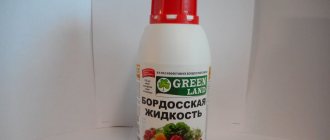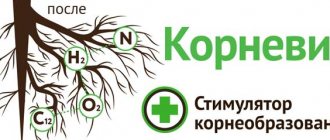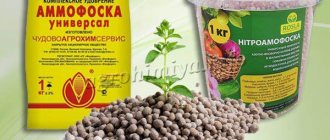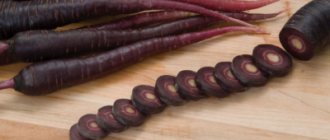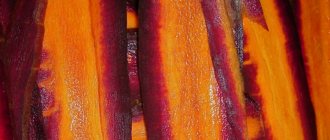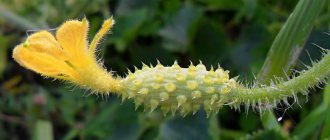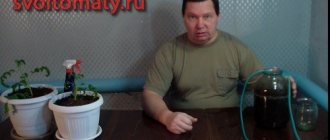Story
Calcium oxide has been used by humans since prehistoric times.
By heating limestone to remove carbon dioxide, at a temperature of several hundred degrees Celsius, ready-made calcium oxide is obtained, which will actively react with moisture from the atmospheric air. In prehistoric times, limestone was heated over an open fire. Beginning in the 17th century, industrial kilns were built to produce lime, and production technology has remained virtually unchanged since then.
Composition and properties
In its pure form, building lime is a colorless and odorless material that is very poorly soluble in water.
There are several types of lime.
- Slaked. The chemical formula is Ca (OH) 2. It is divided into fluff powder and lime paste.
- Quicklime. This composition with the formula CaO can be divided into ground and lump depending on the processing method.
- Chlorine. The formula looks like Ca(Cl)OCl. It is considered an excellent antiseptic.
- Sodium. This type is represented by a mixture of slaked lime and NaOH (caustic sodium soda). It is used narrowly where neutralization of carbonic acid is required.
The advantages of the material include:
- hygroscopicity – lime is resistant to moisture, does not allow liquid to pass through and does not change its properties under the influence of adverse external conditions;
- disinfection - is an antiseptic, all bacteria that fall on the surface of lime die, the composition is an environment unfavorable for the appearance of mold and fungi;
- no unpleasant odor;
- versatility - its technical characteristics are high, it can be used on old coatings, as well as on freshly painted surfaces;
- resistance to UV rays;
- good interaction with the coloring composition;
- low price.
Lime has some disadvantages.
Norms for adding lime to the soil
To increase productivity, fluff lime must be applied correctly. Application in the garden, dosage must correspond to the following application rates:
- heavy, clay soils: 450-800 g/sq.m. m;
- light soils, loams, alumina: 350-600 g/sq.m. m;
- the lightest, sandy soils: 250-500 g/sq.m. m.
Exceeding the application rate is harmful to plants. Too alkaline soil leads to a decrease in the absorption of most essential microelements by plants, in particular calcium. On the other hand, poor quality of liming can be caused by adding lime to the soil at the same time as manure. In this case, the formation of insoluble compounds occurs, which are useless for plants. Vegetable crops begin to lack essential nutrients and do not produce a good harvest.
Manufacturing and features
Lime is a special material that is made by processing and firing chalk, shell rock, as well as limestone and other natural rocks that contain carbonate. Fossils are usually processed in a furnace under the influence of a temperature of +1000...+1300 degrees. Blocks of rock can be transformed into pieces of different shapes and sizes, which are then subjected to future processing without the participation of catalysts and chemical reagents. As a result, the result is a 100% natural material, which consists entirely of natural components of natural origin. Lime may contain small amounts of clay impurities and minerals as additives.
Safety precautions when working with lime mortar
As mentioned above, when working with such material, you need to be very careful and follow the instructions of professionals. This is because the material is considered caustic. Simple rules and recommendations will help you protect yourself from possible unpleasant situations:
- when working with such white powder material, you must wear safety glasses and gloves;
- When you pour water into the powder, the quenching process begins. It is best to maintain a distance from the container in which the extinguishing process takes place. This is due to the fact that when heating the water, it is possible that the solution will splash;
- Be sure to protect your respiratory system as well. This can be done using a cotton-gauze bandage;
- If lime gets on your skin, be sure to remove it with a cotton swab moistened with sunflower oil. A compress must be applied to the area affected by the solution. Water with 5% vinegar;
- If such a solution gets into your eye, immediately rinse it with plenty of warm water. If necessary, contact a specialist.
Determination of soil acidity
To determine acidity, a special device is used - a Ph meter. But ordinary summer residents are unlikely to have it. Litmus tests are more readily available. They do not give accurate indicators, but by color you can determine how acidified the soil is:
- blue tint of paper – calcareous soil – alkaline or slightly alkaline;
- green tint – neutral;
- beige color is characteristic of loams;
- red and its shades – the soil is acidic.
If you have nowhere to buy litmus paper or no time, then you need to go out into the garden and carefully examine the soil. If there is a gray-white coating, such as ash, then it is necessary to add lime to the soil in the fall or spring. The amount of lime fertilizers is calculated based on the degree of acidification.
Video: Whitewashing garden crops with lime
Find a low area in the garden where water usually accumulates and see what color it is. If it is brownish-rusty with a film, this also indicates an increased level of acid.
Lime is used for soil in the garden when weeds - dandelion, horsetail or mullein - begin to multiply there.
There is a popular method for determining the presence of acid - vinegar. A few drops of vinegar are poured onto the guest of the earth. If hissing occurs, but the soil does not change color, then there are enough carbonates in it. If the soil turns white and hisses, then you need to decide when and how best to apply lime to the soil - in autumn or spring.
Security measures
You can carry out any manipulations with the powder without additional protective clothing. Stirring in water is carried out using a stick or wooden implement. When pouring water, you will need to protect your eyes and hands, as the powder is volatile. When connected to a liquid, a heating process occurs, which will definitely lead to injury.
If dry lime is used incorrectly, there is a risk of intoxication. The poisoning process can be determined by the appearance of burns (swellings) on the mucous membranes (mouth, eyes, nose).
There may be a sharp pain in the stomach area. There is a desire to constantly drink a lot of liquid. One of the manifestations of intoxication is diarrhea and nausea.
Slaked lime
(formula – Ca(OH)2) is a strong base. May often be found in some sources under the name calcium hydroxide or "fluff".
Properties: Presented as a white powder that is slightly soluble in water. The lower the temperature of the medium, the lower the solubility. The products of its reaction with acid are the corresponding calcium salts. For example, immersing slaked lime in sulfuric acid produces calcium sulfate and water. If you leave the fluff solution in the air, it will interact with one of the components of the latter - carbon dioxide. During this process, the solution becomes cloudy. The products of this reaction are calcium carbonate and water. If you continue to bubble carbon dioxide, the reaction will end with the formation of calcium bicarbonate, which is destroyed when the temperature of the solution increases.
Slaked lime and carbon monoxide will interact at a temperature of about 400 ° C, its products will be the already known carbonate and hydrogen. The substance can also react with salts, but only if the process ends with the formation of a precipitate, for example, if you mix “fluff” with sodium sulfite, the reaction products will be sodium hydroxide and calcium sulfite. What is lime made from: The very name “slaked” already suggests that something was slaked to obtain this substance. As everyone knows, any chemical compound (or anything at all) is usually extinguished with water. And she has something to react to. In chemistry, there is a substance called “quicklime.” So, by adding water to it, the desired compound is obtained.
Application: Slaked lime is used for whitewashing any room. It is also used to soften water: if you add “fluff” to calcium bicarbonate, hydrogen oxide and an insoluble precipitate are formed - the carbonate of the corresponding metal. Slaked lime is used in tanning leather, causticizing sodium and potassium carbonates, producing calcium compounds, various organic acids and many other substances. Using a solution of “fluff” - the well-known lime water - you can detect the presence of carbon dioxide: when it reacts with it, it becomes cloudy.
Dentistry cannot do without the calcium hydroxide now being discussed, because thanks to it, in this branch of medicine it is possible to disinfect the root canals of teeth. Lime mortar is also made using slaked lime by mixing it with sand. A similar mixture was used in ancient times, then not a single building masonry could do without it. However, now, due to the unnecessary release of water during the reaction of the “fluff” with sand, this solution is successfully replaced with cement. Calcium hydroxide is used to produce lime fertilizers, it is also a food additive E526... And many other industries cannot do without its use.
How and where is lime used?
Each of us has come across such a material as slaked lime. Its scope of application is so diverse that it can even be found during the preparation of some dishes. But this is a rarer option.
Most often we encounter it at the dacha, at a construction site. Here we are talking not only about large construction projects, but also in private construction projects.
Application in construction
Slaked lime is used in construction in the following cases:
- The most common and well-known case is whitewashing walls and ceilings. Here about MDF for the ceiling;
Whitewashing walls and ceilings
- Lime can also be used to protect wooden buildings from fire and from rotting. To do this, it is enough to simply treat the object itself with diluted lime;
- slaked lime is used for connecting cement mortars. Here are the proportions of cement-lime mortar for plaster;
Connecting solution
- It can also be found when preparing silicate concrete. Here is the cement consumption per 1 cubic meter of concrete;
Silicate concrete
- This material is also used when installing the furnace, namely when laying its internal part. Here about the mortar for plastering the stove.
You need to understand that lime must be prepared according to a specific recipe.
It is the right technology that allows you to prepare the material correctly so that it fulfills all its tasks.
Can it be used and how is it used in gardening and gardening?
Slaked lime has found its application in gardening:
- lime takes part in the production of fertilizer , which is used in gardening and gardening;
Fertilizer
- garden _ A special solution is made from this material, which is used to whiten the beds in order to protect the plant from various kinds of diseases, as well as to protect the beds from parasites;
Sadovaya
- for whitewashing trees . This procedure not only guarantees protection for the tree bark, but also gives them a beautiful appearance.
Whitewashing trees
But this is not all where such material can be used. It can be used:
- in the process of tanning leather;
- lime is also added to connecting systems to clean waste pipes;
- It is interesting that lime is added to the production process of E 526, which in turn is used in the food industry;
- You can even find this material in dentistry. It has found its application in the simple disinfection of canals in the roots of teeth (canals).
Quite a lot of industries and spheres of human activity use it only in slaked form, but again, in order to get the desired result, it is necessary to distribute lime in the correct proportion.
Lime is also used in the process of disinfecting garden tools. The process is carried out only by fresh slaking of the material . The process is simple - the material is neutralized in a one to one ratio, after which it is allowed to dry, after which lime milk is prepared.
Read the material about bleach for disinfection.
Material preparation scheme:
- one kilogram of lime is one liter of water;
- let the material cool and dry;
- add more liters of water.
Such material can be used not only for disinfecting garden insurgents, but also for disinfecting premises.
For more information about using lime, watch the video:
Instructions for slaking lime
The lime slaking process can be organized at a construction site or at home. Depending on the type of raw material, the finished solution is:
- Quick-extinguishing (cooks in 10 minutes).
- Medium-extinguishing (extinguishing within 25 minutes).
- Slow-cooking (takes up to 1 hour to cook).
The duration of quenching is determined by the time from the beginning of adding water to the feedstock until the chemical composition of the finished product is completely stabilized.
Preparatory stage
For work, it is necessary to prepare raw materials and personal protective equipment from the negative effects of thermal steam - gloves, goggles, mask, clothing made of thick fabric.
The raw material should be quicklime, a deep wooden or metal container and a kneading device.
Also, to prepare a large volume of the mixture, you will need an earthen pit and a spacious box made of a wooden base, equipped with a drain window with a mesh filter.
Quenching process
To obtain high-quality hydrated lime, the following steps are performed:
- The raw materials are poured into the prepared container.
- Water is gradually added to the base in a 1:1 ratio and slowly stirred to activate the quenching process. This proportion is suitable for preparing fluff - a powdery mixture. To obtain lime dough or milk, 400 g of water must be added to 1 kg of raw materials.
- Stirring of the substance is carried out until the quenching reaction is completely completed.
- The freshly slaked solution is infused in a container for 40 hours until thickened, and used 30 days after preparation.
Cancellation in a wooden box
If a wooden box was used to prepare lime, the finished mixture is poured through a filter window into an earthen pit, covered with boards and infused for several days.
After the end of the period, the lime is covered with a sand layer 18 cm high and further infused for 2–3 weeks.
Application in horticulture
Fluff is used for whitewashing tree trunks in gardens and enriching compost with minerals, as well as preventing its acidification.
How to dilute lime for whitewashing trees?
To obtain a solution of the desired consistency, 1 kg of the mixture is diluted with 3 liters of water. Lime mortar is used to lubricate tree trunks: it helps protect them from exposure to direct sunlight and attacks by pests. It is recommended to carry out treatment in spring. The old bark is torn off and covered with limestone solution.
The downside is that the mixture is quickly washed off the trunks in unfavorable weather conditions, so the addition of other components is recommended. Recipe:
- 300 g sand clay;
- 1 kg of dried mullein;
- 200 g of copper sulfate powder;
- 1 kg slaked lime;
- 10 liters of settled water.
All components are mixed and left to swell for 2-3 hours. Then the tree trunks are coated. Clay provides additional anchorage to the bark. This treatment is also carried out in September for the winter.
Fluff to improve the quality of compost
Add any organic materials to the compost bin. Then they begin to ferment and new mineral complexes are formed. When organic matter decomposes, a large amount of acid is released, which delays the fermentation process. Slaked lime has the property of neutralizing an acidic environment, accelerating the activity of microorganisms, and eliminating the formation of unpleasant odors.
The scope of use is determined by the variety of lime
Construction lime, an environmentally friendly material, is obtained from natural raw materials.
Used in preparation:
Construction mortars, - thermal insulation materials, - sand-lime brick, - cinder blocks, - aerated concrete, - dry construction mixtures, - plaster and adhesive compositions, - masonry mortars, - putty.
Use of construction lime.
Due to the absence of waste and the complete use of all components of crushed lime (silicates, calcium carbonate, ferrites) during the curing process, lime is used in the production of mortars and concrete. The products are highly durable, dense and waterproof. All these properties are especially important in production:
Sand-lime brick, stabilizing and strengthening road mortars.
As a disinfectant, quicklime is widely used in poultry farms and fisheries.
In agriculture, lime is used to treat and purify wastewater and restore the fertile soil layer.
In fact, quicklime is a semi-finished product. Most often, lime is slaked with water before use. As a result of a chemical reaction, magnesium and calcium oxides are converted into their hydrates and a doughy, soft mass is obtained. In this case, large pieces of lime disintegrate into small particles no larger than 20 microns in size.
The smaller the particles, the higher the plasticity of the lime mass and its construction properties. This kind of lime is called “fluff” and is used in the production of:
Dry construction mixtures, mineral fertilizers, for neutralizing hazardous waste from various enterprises (metallurgical, waste processing).
When using slaked lime, the following increases:
Quality of plaster mortars and construction dry mixtures; - viscosity and - water resistance of concrete and other cementitious materials.
Limestone in architecture and design
Limestone is a very popular material for construction and cladding of buildings. Suitable for cladding facades, as well as for creating decorative elements of the exterior - bas-reliefs, columns and pilasters, brackets. The scope of interior design solutions is quite wide: the manufacture of columns, arches, fireplace portals, limestone finishing of floors and walls, door and window openings. Some types of limestone are suitable for rooms with high humidity (bathrooms, swimming pools).
In landscape design, limestone is used in the design of paths, terraces, decorative walls, fences and the construction of alpine slides (retains heat, allows water and air to pass through, normalizes soil composition).
In our country, domestic limestones, Spanish limestones and German marbled limestones are popular. Due to its relatively low price (compared to other natural stones) and resistance to temperature changes (the number of winter/summer cycles), limestone is the most popular material for finishing the facades of residential complexes and commercial buildings and structures.
The most popular limestones:
Jura Beige
Jura Gray
Jura Rahmweis
Branco Valongo
Branco do Mar
Tips and tricks
If you store lime in bags, it is better to do it in a dry place out of direct sunlight. When purchasing this substance, make sure that it is stored under suitable conditions, a description of which must be on the packaging. In addition, lime whitening is quite cheap and will be an excellent solution if you are on a limited budget. Another important point is that lime whitewash will be an excellent solution for wet rooms, as it has excellent moisture-resistant properties.
Before applying new whitewash, you should first wash off the old whitewash from the ceiling. In any other case, the new whitewash will simply fall off along with the old one.
You should also be very careful when dissolving lime in water. Given the differences between different species, the amount of water that is needed will vary. Boiling lime, sodium or carbon dioxide will require different amounts of water for proper dilution.
To give the whitewash some pleasant shade, you can add color to it. Typically, in this case, 20 g of blue is added to the container with whitewash. To carry out various types of finishing work on a house made of wood or brick, it would be best to choose a cloudy day or evening. The reason is simple. The characteristic of lime is that it does not like too dry and hot weather, as well as exposure to direct sunlight.
The technological procedure for applying whitewash must be followed as closely as possible. Any deviation from the process will cause you to be disappointed with the result.
Lime is an excellent material that is used in many areas. For example, white lime traditionally decorates trees in the spring, protecting them from pests, serves as an excellent solution for whitewashing walls, and generally has a lot of advantages that distinguish this fairly affordable material from others.
To learn how to properly slak lime, watch the following video.
KitchenSubtleties of kitchen-living room design in the style of “minimalism”
Kitchen layout with an area of 9 sq. m with a refrigerator Kitchen design with an area of 7 sq. m. with refrigerator Kitchen design with an area of 8 sq. meters with a refrigerator Design of a small kitchen with an area of 4 sq. m with refrigerator Children's bedrooms for boys Bedroom for two girls Bedroom and children's room in one room Children's bedrooms Children's bedroom for two children No comments Popular
In order
Send Interesting in the section “Dry building mixtures” Scope of application of concrete contact
Cement-sand mortar: pros and cons Dry building mixtures Cement-sand mixture: features and technical characteristics Dry building mixtures Features of the Emaco repair mixture Dry mixtures: choosing repair compounds for screed Crushed stone-sand mixture: features and application How to choose a masonry mixture for bricks? Repair mixtures for concrete: varieties and selection Dry construction mixturesFeatures of gypsum mixture textarea>
Types of lime
There are several cementitious materials that belong to the hydraulic group. Lime is a binding material that is used to prepare various mortars used during repairs or construction. Lime itself can be lump or ground. For extinguishing, lump is used, since hardening of this material occurs in air after treatment with water.
Lime is slaked into dough or fluff, which is often added to various dry mixtures, since this product perfectly protects against all kinds of pests. If lime is slaked into dough, it can be stored in pits for a very long time. It is worth noting that the quality of this test only gets better over time.
Ground lime is also called boiling lime - it must be used quickly, since its shelf life does not exceed one month after preparation.

